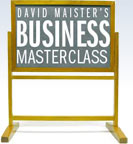

TITLE | TIME |
Why Merge? | (23:09) |
What are the separate goals that professional businesses seek in engaging in mergers? We identify a number of types of mergers and examine the pro’s and con’s of each of them.
NOTES FOR THE EPISODE:
Timeline:
01:40 —
What might be the benefits to client (or customer)s of a professional company merger? Consider five kinds of mergers that I refer to as the MENU, BULK, DOTS, ALCHEMY and CRISIS mergers.
01:56 —
The Menu Merger
The MENU merger attempts to create a competitive advantage by adding additional services to the company’s service offerings, thus aiming to provide client (or customer)s with a broader range through effective cross-selling. Does this work?
04:59 —
The Bulk Merger
BULK mergers are based on the theory that you have to be big to be credible. They are defined as mergers between similar companies in the same locations, where the theory is that by getting bigger, the company will be better able to compete.
07:46 —
The Dots Merger
The DOTS merger describes combinations of similar companies in different geographic regions. Here there is an attempt to gain a competitive advantage by adding locations, thereby offering “global,” “national” or “regional” coverage.
13:51 —
The Alchemy Merger
Alchemy mergers are based on the expectation of synergy. By merging, it is hoped, the company will be able to create something new. Let’s acknowledge immediately that this can be done. In fact, as difficult as it is to do well, this is the most powerful of all merger types.
16:58 —
The Crisis Merger
One of the most common types of merger fits none of the categories described above. It is based on the fact that the single greatest benefit derived from most professional company mergers is the creation of huge disruption within the merged company(s). This disorder creates the conditions to make significant managerial changes that could not politically have been accomplished pre-merger (even if they were sensible and obvious then.)
19:33 —
So what are the lessons? In spite of the cynicism I have expressed here, I do believe that some mergers can be a wise strategic move for the right company. The principles to observe are relatively few and quite simple.
21:34 —
The conclusion is that a merger will succeed if (and only if ) all the following are true:
- you know exactly which client (or customer)s will derive benefit from the merger;
- you know exactly which benefits these are going to be;
- you have direct evidence that these client (or customer)s want these benefits; and
- you have a concrete action plan on exactly how you’re going to achieve this extra value for client (or customer)s.
If you’ve got all that – go ahead and merge!

















